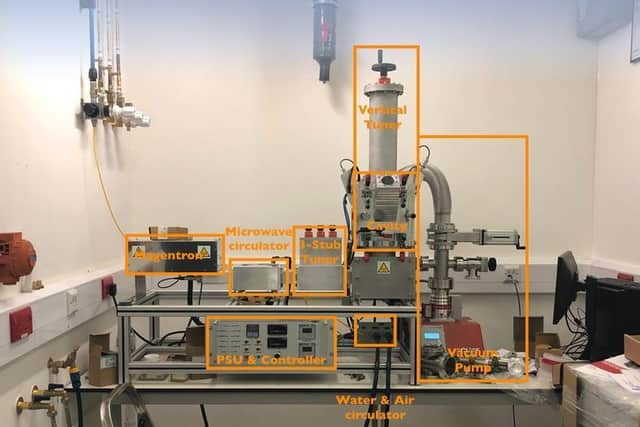Milton Keynes university's research could lead to humans living on the Moon and Mars
and live on Freeview channel 276
The research team believe that maintaining a long-term presence on the Moon is the next step in space exploration.
From the university, Dr Sungwoo Lim, Professor Mahesh Anand, Dr James Bowen, Dr Giulia Alessandrini, Vibha Levin Prabhu and Aidan Crowley, a researcher from EAC are exploring the possibility of using lunar soil as a resource for possible habitation on the Moon.
Advertisement
Hide AdAdvertisement
Hide AdThe idea is to use resources already on the Moon and make them less dangerous to humans through the use of microwave energy. Rather than experimenting on earthly materials which would be expensive and have to be transported into space.


Their findings suggest the soil already on the Moon which is readily available to be tested on, could be the key if they can make the surface safe.
Dr Sungwoo Lim, research fellow in space sciences at The Open University, explains: “The lunar surface is very different, and there is the issue of no atmosphere and microgravity, so we simply cannot use our old technology and materials – such as mixing cement and water to make concrete for building on the Moon. Instead, we have to use new technology, which is appropriate for the lunar surface environment.”
That's where microwaves come in, they're used to melt the soil and assess whether microwave energy and lunar soil could provide an adequate foundation for further exploring the Moon.
Advertisement
Hide AdAdvertisement
Hide AdDr Lim added: "“This experiment demonstrates that microwave energy and lunar soil are useful in fabricating construction elements such as bricks, pavements, dust protection wall and a (micro)meteorite cover, which can protect astronauts from the potentially hazardous environment so they can continue their mission on the Moon.”
Now with a viable resource, the team will look to develop a microwave heating-based 3D printing technique as part of an extra-terrestrial construction process to support permanent settlement on the Moon and Mars.